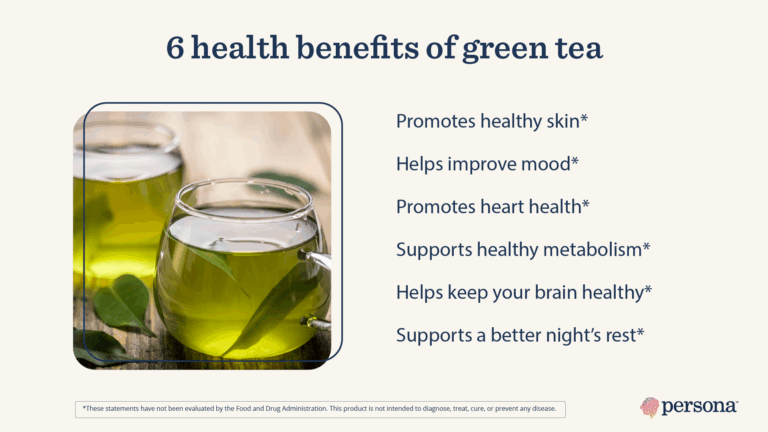The Silent Threat: Why Getting Your Uric Acid Under Control is Crucial
The human body is a marvel of intricate biological processes, a symphony of chemical reactions designed to sustain life. Yet, within this elegant system, certain elements can become silent saboteurs, slowly eroding health without a whisper of warning until the damage is substantial. One such element, often overlooked and frequently misunderstood, is uric acid. It’s a natural byproduct of purine metabolism, vital in its proper balance, but a formidable "silent threat" when it tips into excess.
This isn’t merely a tale of gout, the excruciating joint inflammation commonly associated with high uric acid. This is a deeper narrative, a story of systemic disruption, chronic inflammation, and the insidious pathways through which elevated uric acid can undermine cardiovascular health, compromise kidney function, exacerbate metabolic disorders, and even influence neurological well-being. It’s a story that unfolds not just in laboratories and medical journals, but in the lives of millions, often without their full awareness until a crisis point is reached.
Let us embark on this journey, not just with clinical facts, but with the human element at its core, understanding why controlling this seemingly innocuous compound is not just important, but absolutely crucial for a future free from its silent, relentless siege.
Arthur’s Awakening: A Whisper of Discomfort
Arthur had always considered himself relatively healthy. A diligent architect in his late 40s, he ate reasonably well, enjoyed weekend hikes, and managed the usual stresses of life with a stoic calm. His only real complaint, for the past few years, had been a subtle, persistent stiffness in his big toe joint – a fleeting ache that would come and go, often after a particularly rich meal or a demanding week. He’d chalked it up to aging, perhaps an old sports injury he’d long forgotten. Aches and pains, he reasoned, were part of the deal.
But then came the morning that changed everything. He woke to an inferno in his foot. The pain was unlike anything he had ever experienced – searing, throbbing, exquisite. Even the weight of a bedsheet felt unbearable. His big toe was swollen, red, and hot to the touch. Panic, sharp and unwelcome, sliced through his usual calm.
A frantic trip to the emergency room confirmed his worst fears, or at least, gave a name to his suffering: gout. The doctor, a kind but direct woman named Dr. Anya Sharma, explained it succinctly: "Arthur, your uric acid levels are through the roof. This is a classic gout attack."
Arthur, still reeling from the pain, had a vague recollection of uric acid being linked to rich foods, perhaps something his grandfather had mentioned. But "through the roof"? What did that even mean? And more importantly, why was this happening to him? Dr. Sharma prescribed medication for the acute attack and, crucially, scheduled a follow-up, promising to explain the full implications of his diagnosis. Little did Arthur know, this was merely the first, loudest symptom of a much deeper, far more pervasive "silent threat" that had been lurking within him for years.
Understanding the Enemy: What is Uric Acid?
To truly grasp the significance of Arthur’s diagnosis, and indeed, the broader health implications, we must first understand uric acid itself.
Uric acid is the end-product of purine metabolism in humans. Purines are nitrogen-containing compounds found in our DNA and RNA, as well as in many foods. They are essential building blocks of life. When cells die and are recycled, or when we consume purine-rich foods, these purines are broken down. The final step in this breakdown process, catalyzed by an enzyme called xanthine oxidase, produces uric acid.
Normally, about two-thirds of the uric acid produced daily is excreted by the kidneys through urine, and a smaller amount is eliminated through the digestive tract. The balance is critical. A normal serum uric acid level typically ranges between 3.5 to 7.0 mg/dL (milligrams per deciliter). When production exceeds excretion, or when excretion is impaired, uric acid accumulates in the blood, a condition known as hyperuricemia.
Sources of Purines:
- Endogenous Production: The vast majority (around 80%) of uric acid comes from the natural breakdown of cells and tissues within our own bodies. This is a constant, ongoing process.
- Dietary Intake: The remaining 20% comes from the foods we eat. Certain foods are particularly high in purines:
- Organ meats: Liver, kidney, sweetbreads.
- Red meats: Beef, lamb, pork.
- Certain seafood: Anchovies, sardines, mackerel, scallops, mussels.
- Alcohol: Especially beer (due to its yeast content and impact on purine metabolism) and spirits.
- Fructose-sweetened beverages: Fructose, unlike other sugars, is metabolized in a way that directly increases uric acid production and reduces its excretion. This is a significant modern dietary contributor.
For Arthur, his lifestyle, while seemingly moderate, had contained subtle triggers. A fondness for craft beers, occasional rich meals with red meat, and perhaps a hidden susceptibility in his kidney function had tipped the scales over time.
Beyond Gout: The True "Silent Threat" of Hyperuricemia
When Arthur met Dr. Sharma for his follow-up, the acute pain had subsided, leaving a lingering tenderness and a profound sense of vulnerability. He expected a lecture on diet and perhaps a lifelong medication for gout. What he got was far more sobering.
"Arthur," Dr. Sharma began, "gout is your body’s alarm bell. It’s painful, it’s disruptive, but it’s often just the tip of the iceberg. Your consistently high uric acid levels, what we call hyperuricemia, pose a ‘silent threat’ that extends far beyond your big toe."
She explained that while gout is the most recognizable symptom, years of elevated uric acid can silently contribute to a cascade of chronic diseases, many of which are far more dangerous than a swollen joint. The crystalline deposits of monosodium urate (MSU) that cause gout are merely the most visible manifestation of a systemic issue. Soluble uric acid, circulating in the blood, can trigger inflammation and oxidative stress throughout the body, acting as a precursor or aggravator for a host of conditions.
1. The Cardiovascular Connection: A Heart Under Siege
This was perhaps the most alarming revelation for Arthur. He knew about heart disease, but had never connected it to gout. Dr. Sharma elucidated the complex relationship:
- Hypertension (High Blood Pressure): Numerous studies have demonstrated a strong link between elevated uric acid and hypertension, especially in younger individuals and those without other obvious risk factors. Uric acid is thought to contribute to hypertension by inducing endothelial dysfunction (damage to the inner lining of blood vessels), promoting vascular smooth muscle cell proliferation, activating the renin-angiotensin system (a key regulator of blood pressure), and reducing nitric oxide bioavailability (nitric oxide helps relax blood vessels).
- Atherosclerosis: This is the hardening and narrowing of arteries due to plaque buildup. Hyperuricemia promotes oxidative stress and inflammation, key drivers of atherosclerosis. It can accelerate plaque formation and increase the risk of cardiovascular events like heart attacks and strokes.
- Heart Failure: High uric acid levels have been identified as an independent risk factor for the development and progression of heart failure. It can contribute to myocardial fibrosis (scarring of heart muscle), impair cardiac function, and act as a marker of disease severity.
- Arrhythmias: Some research suggests a correlation between hyperuricemia and an increased risk of atrial fibrillation, a common type of irregular heartbeat.
The mechanism is multi-faceted. Uric acid acts as a pro-oxidant and pro-inflammatory molecule in the vascular endothelium. It stimulates the production of reactive oxygen species (ROS), leading to oxidative stress, which damages cells and tissues. This chronic low-grade inflammation and oxidative stress are central to the development and progression of cardiovascular disease.
2. The Kidney’s Burden: A Vicious Cycle
The kidneys are the primary organs responsible for excreting uric acid. Therefore, it’s no surprise that they are profoundly affected by hyperuricemia. The relationship is often a vicious cycle: high uric acid can damage the kidneys, and damaged kidneys are less efficient at excreting uric acid, leading to even higher levels.
- Uric Acid Nephrolithiasis (Kidney Stones): Uric acid crystals can precipitate in the urinary tract, forming painful kidney stones. These stones can block urine flow, cause severe pain, and increase the risk of urinary tract infections.
- Chronic Kidney Disease (CKD): Hyperuricemia is a recognized risk factor for the development and progression of CKD. It can directly damage kidney cells, induce inflammation and fibrosis in the renal tubules and interstitium, and contribute to glomerulosclerosis (scarring of the kidney’s filtering units). This damage further impairs the kidneys’ ability to excrete waste products, including uric acid, creating a dangerous feedback loop.
- Acute Uric Acid Nephropathy: In rare cases of extremely high uric acid levels (e.g., during chemotherapy for certain cancers), massive amounts of uric acid can precipitate in the renal tubules, leading to acute kidney injury.
Dr. Sharma explained to Arthur that his kidney function, while not severely compromised yet, showed early signs of strain, making the control of his uric acid even more imperative.
3. Metabolic Syndrome and Diabetes: An Unholy Alliance
The link between hyperuricemia, metabolic syndrome, and Type 2 Diabetes is increasingly recognized as a critical public health concern. Metabolic syndrome is a cluster of conditions – increased blood pressure, high blood sugar, excess body fat around the waist, and abnormal cholesterol or triglyceride levels – that occur together, increasing your risk of heart disease, stroke, and diabetes.
- Insulin Resistance: High uric acid levels are strongly associated with insulin resistance, a key feature of metabolic syndrome and a precursor to Type 2 Diabetes. Uric acid can impair insulin signaling in cells, making them less responsive to insulin’s effects.
- Fructose Metabolism: The consumption of high-fructose corn syrup and other fructose-rich foods is a significant driver of both hyperuricemia and metabolic syndrome. Fructose metabolism rapidly depletes ATP, leading to increased uric acid production, and simultaneously contributes to visceral fat accumulation and insulin resistance.
- Obesity: Hyperuricemia is often observed in individuals with obesity, and it can contribute to the inflammatory state associated with excess adipose tissue.
Arthur, though not obese, had noticed his waistline expanding slightly over the years, a subtle shift that now took on new significance. The "silent threat" was weaving its way through multiple interconnected systems in his body.
4. Neurological Implications: A Fading Cognition?
While less widely publicized than its cardiovascular or renal effects, emerging research suggests a potential role for hyperuricemia in neurological health. Studies have linked high uric acid levels to an increased risk of cognitive decline, dementia, and even Parkinson’s disease, although the mechanisms are still under investigation. Chronic inflammation and oxidative stress, once again, are thought to be key culprits, damaging neurons and disrupting brain function over time.
The Mechanisms of Damage: How Does Uric Acid Wreak Havoc?
For the knowledgeable audience, understanding how uric acid causes these systemic problems is crucial. It’s not just a simple accumulation; it’s an active participant in pathological processes.
-
Inflammation (The NLRP3 Inflammasome): This is perhaps the most well-established mechanism. When uric acid levels are high enough to form microscopic monosodium urate (MSU) crystals in tissues, these crystals are recognized by immune cells (macrophages) as danger signals. They activate a multi-protein complex called the NLRP3 inflammasome. This activation leads to the cleavage and release of potent pro-inflammatory cytokines, particularly interleukin-1 beta (IL-1β). IL-1β then orchestrates a robust inflammatory response, contributing to both acute gout attacks and chronic low-grade inflammation throughout the body, fueling atherosclerosis, kidney damage, and insulin resistance. Even soluble uric acid, not just crystals, can promote inflammation by activating signaling pathways in various cell types.
-
Oxidative Stress: Uric acid, while often considered an antioxidant in plasma, acts as a pro-oxidant within cells, particularly in conditions of hyperuricemia. The enzyme xanthine oxidase, which produces uric acid, also generates reactive oxygen species (ROS), such as superoxide and hydrogen peroxide. These ROS contribute to oxidative stress, damaging cellular components like DNA, proteins, and lipids. Oxidative stress is a fundamental mechanism underlying endothelial dysfunction, atherosclerosis, kidney damage, and cellular senescence.
-
Endothelial Dysfunction: The endothelium is the inner lining of blood vessels, playing a critical role in regulating vascular tone, inflammation, and coagulation. Hyperuricemia directly impairs endothelial function by reducing the bioavailability of nitric oxide (NO), a crucial vasodilator. It also promotes the production of endothelin-1 (a potent vasoconstrictor) and adhesion molecules, leading to stiffening of blood vessels and increased risk of clot formation and plaque development.
-
Activation of the Renin-Angiotensin System (RAS): Uric acid can activate the RAS, a hormonal system that plays a central role in regulating blood pressure and fluid balance. Activation of RAS leads to increased production of angiotensin II, a powerful vasoconstrictor that also promotes inflammation and fibrosis, contributing to hypertension and kidney disease progression.
-
Mitochondrial Dysfunction: Uric acid has been shown to induce mitochondrial dysfunction, impairing the ability of cells to produce energy efficiently. This can have widespread effects on cellular health and contribute to insulin resistance and metabolic derangements.
These intricate pathways demonstrate that uric acid is not merely an inert waste product; it is a biologically active molecule that, in excess, can fundamentally alter cellular function and contribute to the pathogenesis of numerous chronic diseases.
Diagnosis and Monitoring: Shining a Light on the Silent Threat
The good news is that diagnosing hyperuricemia is straightforward: a simple blood test. Dr. Sharma emphasized to Arthur that regular monitoring is crucial, not just during an acute gout attack, but as part of routine health checks, especially for those with risk factors like family history, hypertension, or metabolic syndrome.
- Serum Uric Acid Test: This measures the concentration of uric acid in the blood. Levels above 7.0 mg/dL (for men) or 6.0 mg/dL (for women) are generally considered hyperuricemic. However, it’s important to note that some individuals can have gout attacks with "normal" uric acid levels, and many with hyperuricemia never develop gout. The target for treating gout is often below 6.0 mg/dL, and sometimes even lower (below 5.0 mg/dL) for those with severe gout or tophi.
- 24-hour Urine Uric Acid Test: This can help determine if hyperuricemia is due to overproduction of uric acid or underexcretion by the kidneys, guiding treatment choices.
- Kidney Function Tests (Creatinine, GFR): Essential to assess any existing kidney damage and monitor its progression.
- Other Metabolic Markers: Blood pressure, blood glucose, lipid profile, and BMI should all be monitored to assess overall metabolic health.
For Arthur, his initial reading was a staggering 9.2 mg/dL. This immediately put him in the high-risk category for the full spectrum of silent threats.
Taming the Beast: Management Strategies
Dr. Sharma outlined a comprehensive plan for Arthur, emphasizing that managing uric acid is a long-term commitment, requiring a multi-pronged approach.
1. Lifestyle Modifications: The First Line of Defense
Arthur’s journey began with significant, yet achievable, lifestyle changes.
- Dietary Adjustments:
- Reduce Purine-Rich Foods: Limiting organ meats, red meats (especially processed ones), and certain seafood (anchovies, sardines, shellfish). Plant-based purines (found in vegetables like spinach, mushrooms, and legumes) are generally not associated with increased gout risk and should not be restricted due to their overall health benefits.
- Eliminate Fructose-Sweetened Beverages: This was a big one for Arthur, who often reached for a soda or fruit juice. Fructose is a major driver of uric acid production.
- Limit Alcohol, Especially Beer: Beer is particularly problematic due to its purine content and alcohol’s general effect on uric acid metabolism. Spirits and wine, in moderation, are less impactful but still carry risks.
- Increase Dairy Intake (Low-Fat): Studies suggest that low-fat dairy products may have a protective effect, possibly by promoting uric acid excretion.
- Consume Vitamin C-Rich Foods: Vitamin C has a mild uricosuric effect, meaning it helps the kidneys excrete uric acid.
- Cherries: Some evidence suggests cherries (and cherry extract) can help lower uric acid levels and reduce gout attacks, likely due to their anti-inflammatory and antioxidant properties.
- Hydration: Drinking plenty of water helps the kidneys flush out uric acid. Aim for 8-10 glasses a day.
- Weight Management: Losing excess weight, particularly visceral fat, can significantly lower uric acid levels and improve insulin sensitivity. Rapid weight loss, however, can temporarily increase uric acid, so a gradual approach is key.
- Regular Exercise: Consistent physical activity not only aids in weight management but also improves overall metabolic health, indirectly helping to control uric acid.
Arthur found these changes challenging initially. Giving up his evening beer was tough, and scrutinizing food labels became a new habit. But as he started feeling better, and his energy levels improved, his motivation soared.
2. Pharmacological Interventions: When Lifestyle Isn’t Enough
For many, lifestyle changes alone are insufficient to achieve target uric acid levels, especially when the "silent threat" has already taken root. This is where medication becomes crucial.
- Xanthine Oxidase Inhibitors (XOIs): These are the most commonly prescribed medications for long-term uric acid control. They work by blocking the enzyme xanthine oxidase, thereby reducing the production of uric acid.
- Allopurinol: The classic XOI, used for decades. It’s generally well-tolerated but requires careful dosing, especially in patients with kidney impairment.
- Febuxostat: A newer XOI, often used in patients who cannot tolerate allopurinol or for whom allopurinol is ineffective.
- Uricosuric Agents: These medications increase the excretion of uric acid by the kidneys.
- Probenecid: Helps the kidneys eliminate more uric acid. It’s generally not used in patients with impaired kidney function or a history of kidney stones.
- Acute Gout Attack Medications: These are used to manage the excruciating pain and inflammation of an acute attack, but they do not lower uric acid levels long-term.
- NSAIDs (Non-Steroidal Anti-Inflammatory Drugs): Such as indomethacin, naproxen.
- Colchicine: An anti-inflammatory drug specific for gout, often used in low doses for prophylaxis during the initiation of uric acid-lowering therapy.
- Corticosteroids: Powerful anti-inflammatory drugs used for severe attacks or when other medications are contraindicated.
Dr. Sharma started Arthur on a low dose of allopurinol, gradually titrating it up until his uric acid levels consistently stayed below 6.0 mg/dL. She also prescribed a short course of colchicine to prevent flare-ups during the initial phase of treatment, as lowering uric acid can sometimes trigger acute attacks as crystals dissolve.
Arthur’s Transformation: A Future Reclaimed
The first few months were tough for Arthur. There were moments of frustration, the occasional slip in his diet, and even a mild gout flare-up despite the medication. But Dr. Sharma was a steadfast guide, emphasizing consistency and patience. She helped him understand that this wasn’t about quick fixes, but about re-engineering his body’s internal environment.
Slowly, steadily, Arthur’s uric acid levels normalized. The stiffness in his toe vanished. He felt more energetic, his blood pressure, which had been creeping up, began to stabilize, and his routine blood work showed improvements in other metabolic markers. He lost some weight, his sleep improved, and he rediscovered a zest for his weekend hikes, no longer plagued by the fear of an impending attack.
More profoundly, Arthur gained an understanding of his body’s interconnectedness. He saw how the seemingly isolated pain in his toe was a signal from a system under stress, a complex web where diet, metabolism, and inflammation played crucial roles. He realized that controlling his uric acid wasn’t just about preventing gout; it was about safeguarding his heart, his kidneys, and his future cognitive health. It was about dismantling the "silent threat" piece by piece.
The Unseen Battle: A Call to Action
Arthur’s story is a microcosm of a much larger public health challenge. The prevalence of hyperuricemia is on the rise globally, mirroring the increasing rates of obesity, metabolic syndrome, and Type 2 Diabetes. Yet, awareness of its systemic dangers remains relatively low outside the medical community.
The silent threat of elevated uric acid underscores several critical points:
- Proactive Screening: Routine uric acid testing should be considered, especially for individuals with risk factors for cardiovascular disease, kidney disease, or metabolic syndrome.
- Early Intervention: Addressing hyperuricemia early, even in the absence of gout, could significantly reduce the long-term risk of developing other chronic conditions.
- Holistic Approach: Management must integrate lifestyle changes with appropriate pharmacological therapy, tailored to the individual patient’s risk profile and comorbidities.
- Patient Education: Empowering individuals with knowledge about the multifaceted impact of uric acid is paramount. Understanding the "why" behind the recommendations fosters adherence and better outcomes.
- Research and Innovation: Continued research into the precise mechanisms of uric acid’s pathogenicity and the development of novel therapeutic strategies is essential.
Conclusion: Breaking the Silence
Uric acid, once seen primarily through the narrow lens of gout, has emerged as a formidable "silent threat" to global health. Its insidious role in promoting chronic inflammation, oxidative stress, and metabolic dysfunction connects it to a host of debilitating and life-threatening conditions.
Arthur’s journey from excruciating pain to proactive health management illustrates the power of understanding and addressing this silent enemy. It reminds us that our bodies constantly communicate, sometimes through whispers of discomfort, sometimes through agonizing screams. Learning to listen, to interpret these signals, and to act decisively is the essence of true preventive medicine.
Getting your uric acid under control is not just about avoiding the next gout attack; it’s about safeguarding your heart, preserving your kidneys, protecting your metabolic health, and ultimately, reclaiming your future from a threat that, left unchecked, will silently and relentlessly erode the very foundations of your well-being. The time to break the silence and act is now.







